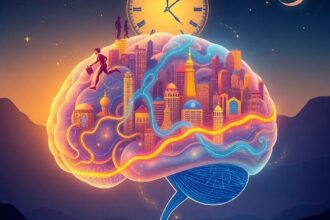Explore how timed light exposure impacts hormonal health, circadian rhythms, and longevity, with insights into melatonin, cortisol, and light therapy benefits.
Discover how the timing of light exposure can optimize hormonal health, improve sleep, and enhance longevity through the science of chrono-phototherapy.
Introduction to Chronobiology and Its Role in Human Health
Chronobiology, the study of biological rhythms, has revealed that our bodies operate on a 24-hour cycle known as the circadian rhythm. This internal clock regulates essential functions such as sleep, hormone production, and metabolism. According to Dr. Charles A. Czeisler, a professor of sleep medicine at Harvard Medical School, Disruptions to the circadian rhythm can lead to a cascade of health issues, including sleep disorders, metabolic syndrome, and even increased risk of chronic diseases.
The Role of Light in Regulating Circadian Rhythms
Light is the primary external cue that synchronizes our circadian rhythms. Specialized cells in the retina, called intrinsically photosensitive retinal ganglion cells (ipRGCs), detect light and send signals to the brain’s suprachiasmatic nucleus (SCN), the body’s master clock. This process influences the production of key hormones like melatonin and cortisol. A 2020 study published in Nature Communications found that exposure to blue light in the morning can enhance alertness and improve mood, while evening exposure can disrupt melatonin production and delay sleep onset.
Melatonin and Cortisol: Hormones Shaped by Light
Melatonin, often referred to as the ‘sleep hormone,’ is produced in response to darkness and helps regulate sleep-wake cycles. Conversely, cortisol, the ‘stress hormone,’ follows a diurnal pattern, peaking in the morning to promote wakefulness and declining at night. Research from the National Institutes of Health (NIH) highlights that improper light exposure, especially at night, can suppress melatonin production and elevate cortisol levels, leading to sleep disturbances and increased stress.
Wavelengths of Light: Blue vs. Red
Different wavelengths of light have distinct effects on hormonal health. Blue light, prevalent in daylight and electronic screens, is particularly effective at suppressing melatonin and boosting alertness. However, excessive exposure in the evening can be detrimental. On the other hand, red light, often used in therapeutic settings, has been shown to promote relaxation and support melatonin production. A 2021 study in the Journal of Clinical Sleep Medicine reported that red light therapy improved sleep quality and reduced insomnia symptoms in participants.
Chrono-Phototherapy for Health Conditions
Chrono-phototherapy, the strategic use of light at specific times, has shown promise in treating conditions like seasonal affective disorder (SAD), insomnia, and metabolic disorders. For instance, light therapy boxes emitting 10,000 lux of light are commonly used to alleviate SAD symptoms. Dr. Norman E. Rosenthal, a psychiatrist who first described SAD, emphasizes that timed light exposure can reset the circadian clock and improve mood, especially during the darker months.
Practical Tips for Optimizing Light Exposure
To harness the benefits of chrono-phototherapy, consider the following tips:
- Expose yourself to natural light in the morning to boost alertness and regulate your circadian rhythm.
- Limit blue light exposure in the evening by using screen filters or wearing blue light-blocking glasses.
- Incorporate red light therapy devices into your nighttime routine to promote relaxation and improve sleep quality.
- Spend time outdoors during daylight hours to enhance overall well-being and support hormonal balance.
Conclusion
The science of chrono-phototherapy underscores the profound impact of light on our hormonal health and longevity. By understanding and optimizing light exposure, we can improve sleep, reduce stress, and enhance overall well-being. As Dr. Czeisler aptly states, Light is not just a tool for vision; it is a powerful regulator of our biology.




